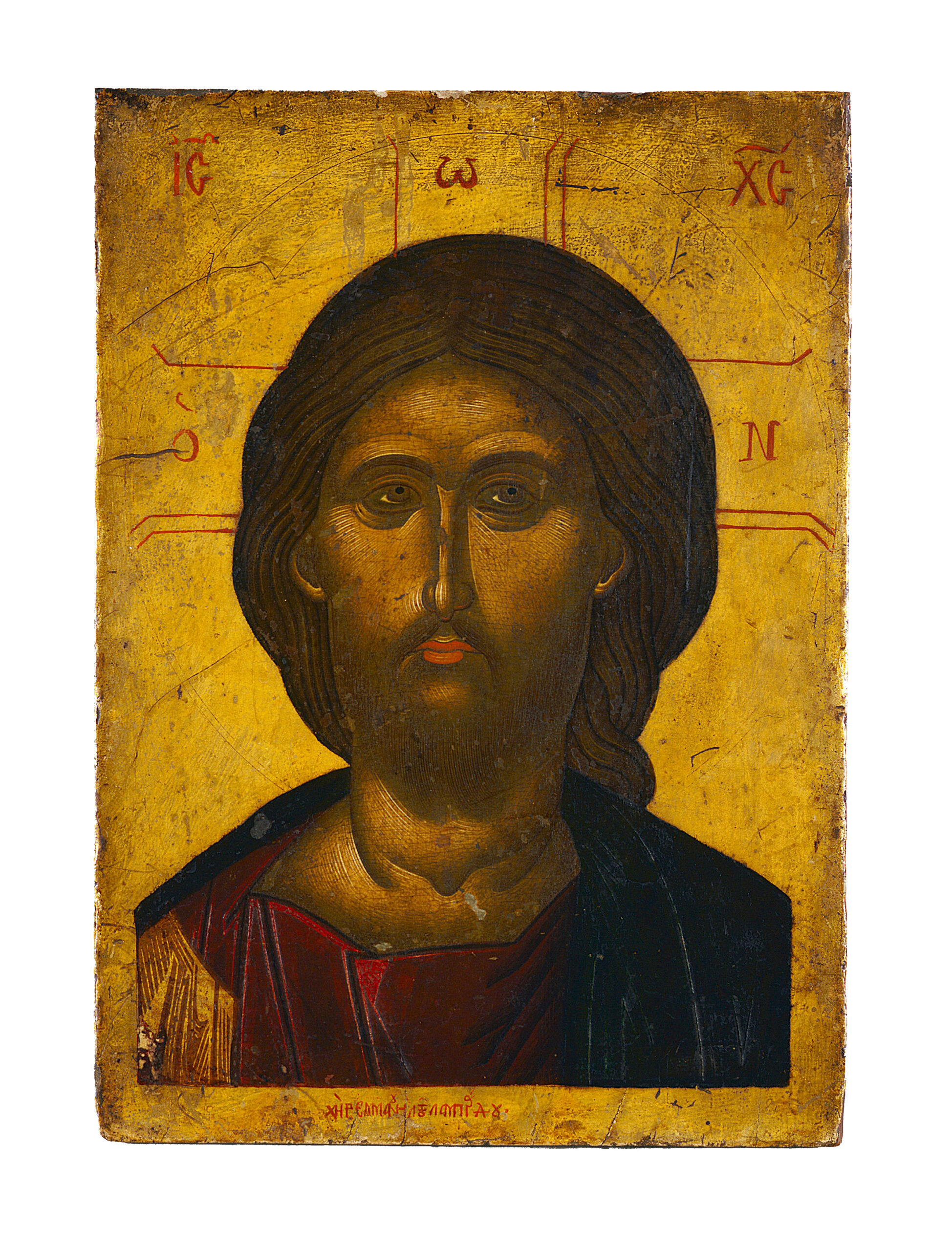

Icon of Christ
Christ is represented to the shoulders, against a gold ground without frame. His halo is defined by an incised double circle and is inscribed with a cross bearing on its arms the inscription: O ΩN.
With sharp gaze and small, red-lipped mouth, the Lord is portrayed in frontal pose with brown hair drawn behind his left shoulder, as is appropriate to the type of the Pantocrator. His deep red chiton with part of the gold clavus is visible on his right shoulder, while the deep blue himation falls on the left shoulder. The facial features are well drawn on the deep brown under layer with firm, distinct brushstrokes and parallel white highlights on the cheekbones, the forehead and the tip of the nose. The work is of the same quality as a series of icons of the same subject, painted by Emmanuel Lambardos, now in the Byzantine Museum, Athens (T. 2103), Russia, collections in England and elsewhere.
The icon was probably part of an ensemble of three icons in which the figures of the Virgin and Saint John the Baptist, converging towards Christ – as encountered in icons by the same painter – completed a composition of the Deesis, as illustrated in characteristic manner in the iconostasis icons painted by Lambardos and in the well-known icon of Saint Menas in the Hellenic Institute in Venice.
There is one other icon of Christ of this kind in the Canellopoulos Museum (Inv. no. E 152), which displays the stylistic traits of Lambardos but has a problematical signature and considerable damage to the paint. This iconographic type of Christ was subsequently widely diffused during the seventeenth-eighteenth century.
PUBLICATION
Chatzidakis N. 2007. Catalogue no. 172, in Skampavias K.—Chatzidakis N. (eds), Paul and Alexandra Canellopoulos Museum.Byzantine and Post-Byzantine Art, Athens, 310–311.
